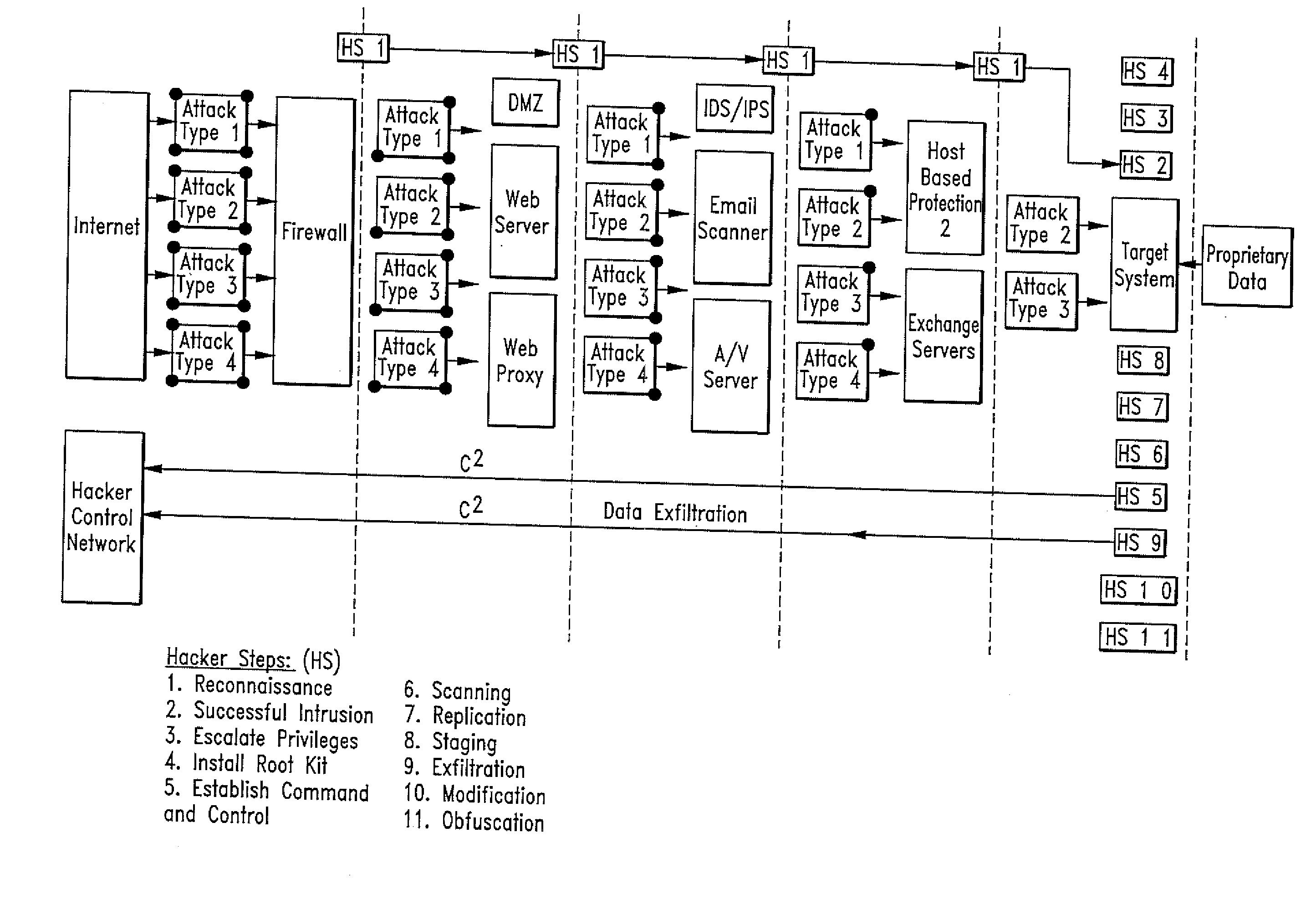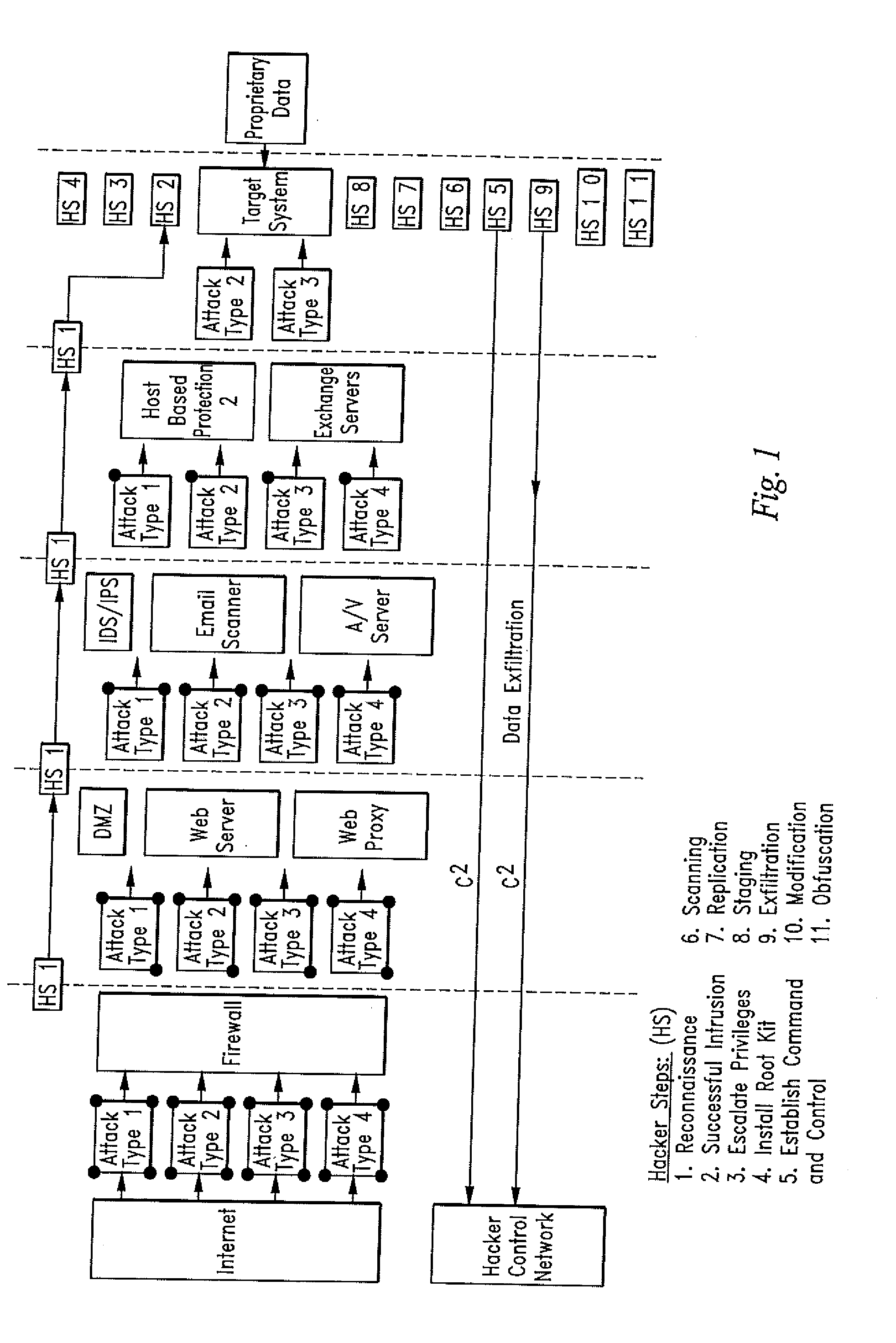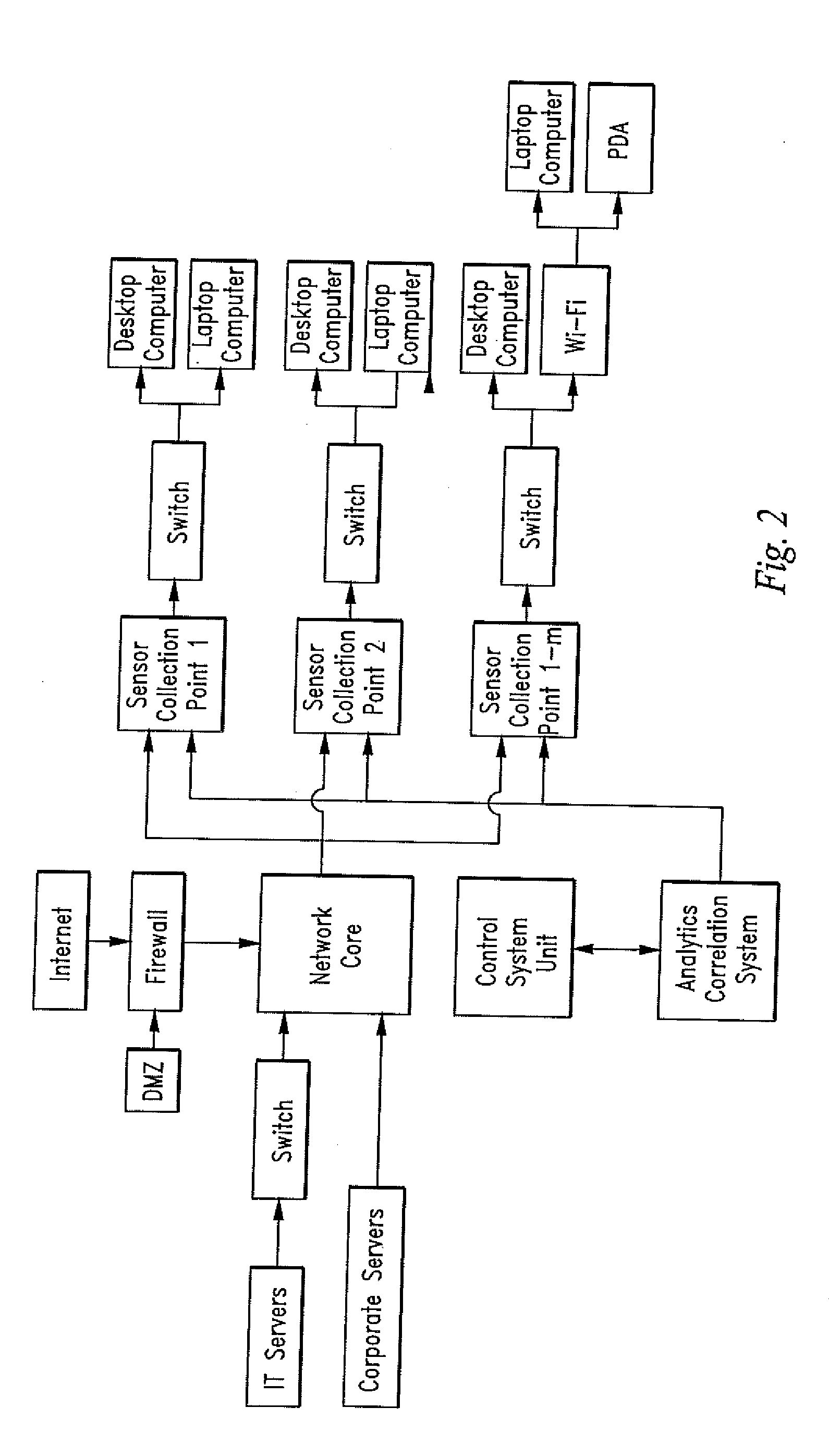Device and Method for Detection of Anomalous Behavior in a Computer Network
a computer network and anomalous behavior technology, applied in the field of anomalous behavior detection in the computer network, can solve the problems of malware evolution, theft or destruction of sensitive or proprietary information, and the state of prior art information security methods and devices,
- Summary
- Abstract
- Description
- Claims
- Application Information
AI Technical Summary
Benefits of technology
Problems solved by technology
Method used
Image
Examples
Embodiment Construction
[0116]Turning now to the figures, applicants disclose a method and device comprised of one or a distributed set of computer network-based sensor elements or sensor control points operating in cooperation with a centralized analytics and correlation engine that cooperate to collect and correlate events sensed across the sensors to detect malicious activity on a monitored network. The method and device may comprise a Rete net-based or a multi-tiered rule set in an analytics correlation system. When malicious activity is detected upon the satisfaction of a predetermined set of rules or conditions, the invention traces the activity to a host or hosts in the network responsible for the activity for further action by a user.
[0117]Certain terms used in the specification herein have a defined meaning as follows:
[0118]“Notification” is defined as the output of a sensor element and an associated predetermined value, level or weight assigned by the user and based on the satisfaction of a prede...
PUM
 Login to View More
Login to View More Abstract
Description
Claims
Application Information
 Login to View More
Login to View More - R&D
- Intellectual Property
- Life Sciences
- Materials
- Tech Scout
- Unparalleled Data Quality
- Higher Quality Content
- 60% Fewer Hallucinations
Browse by: Latest US Patents, China's latest patents, Technical Efficacy Thesaurus, Application Domain, Technology Topic, Popular Technical Reports.
© 2025 PatSnap. All rights reserved.Legal|Privacy policy|Modern Slavery Act Transparency Statement|Sitemap|About US| Contact US: help@patsnap.com



